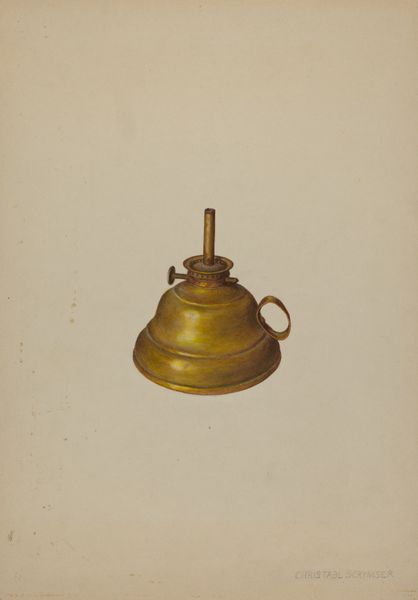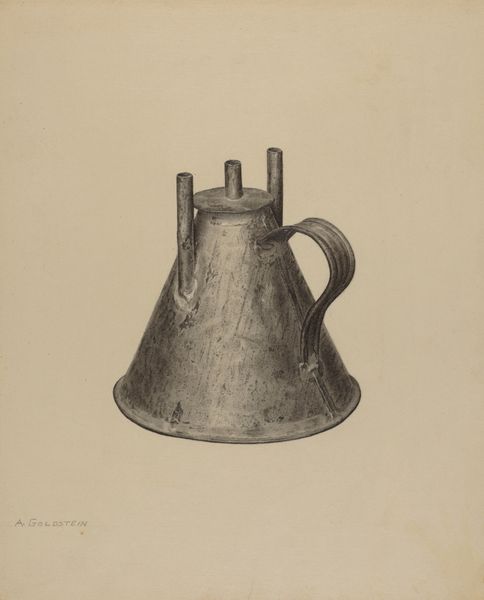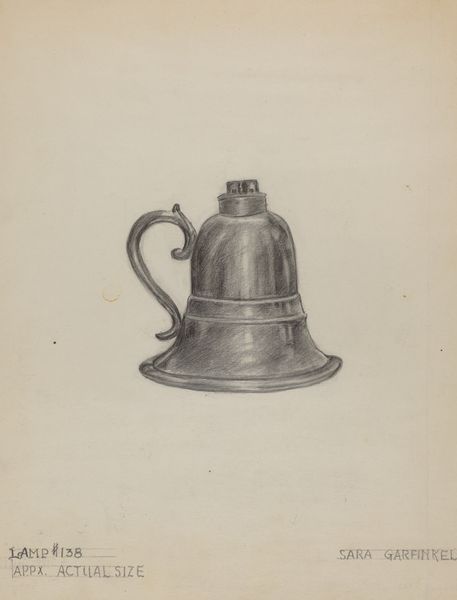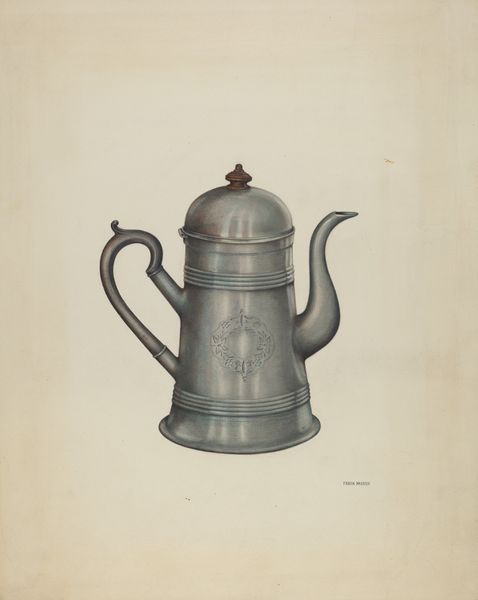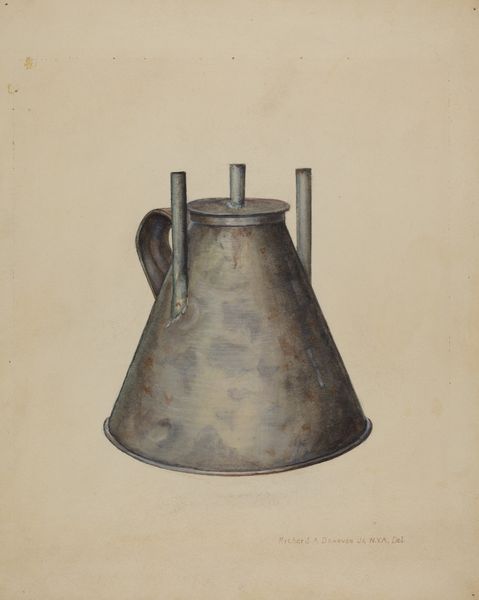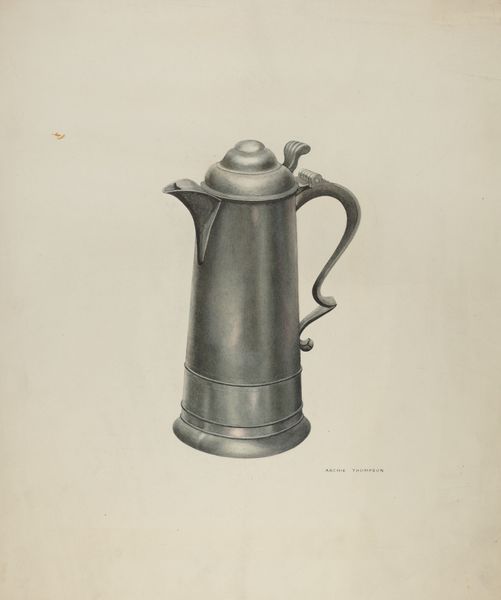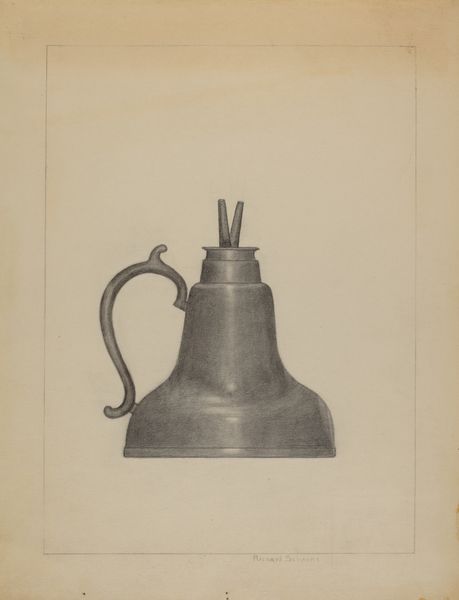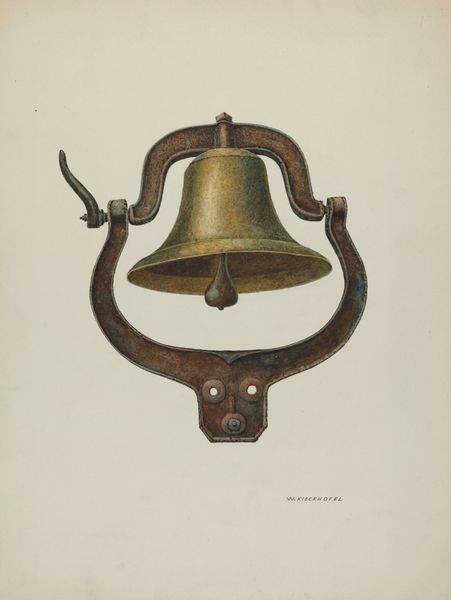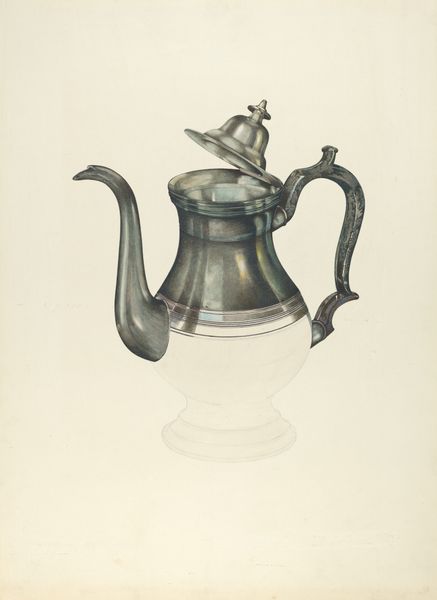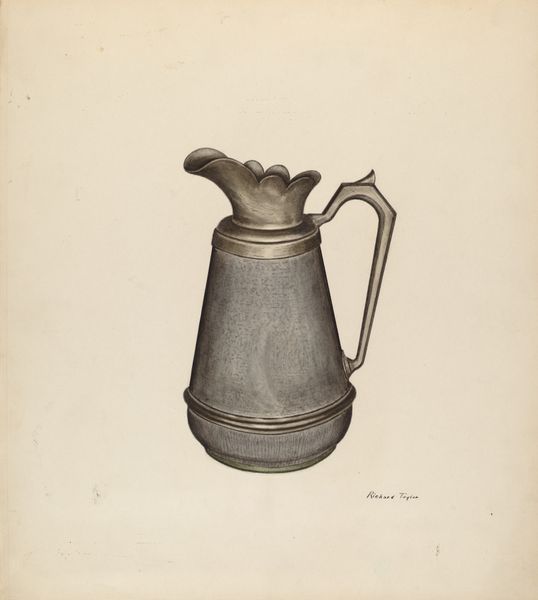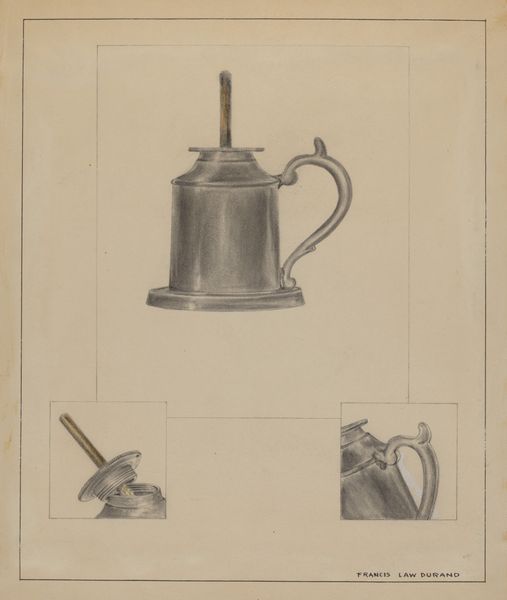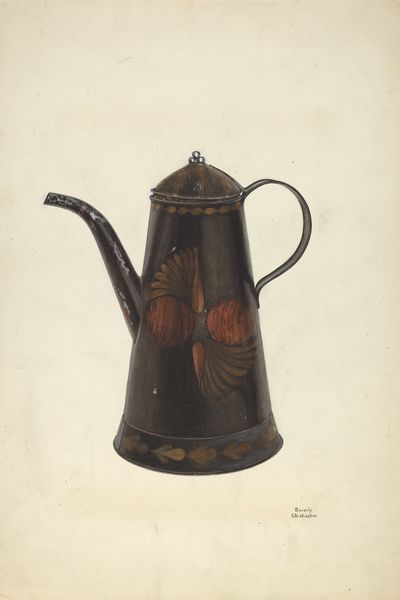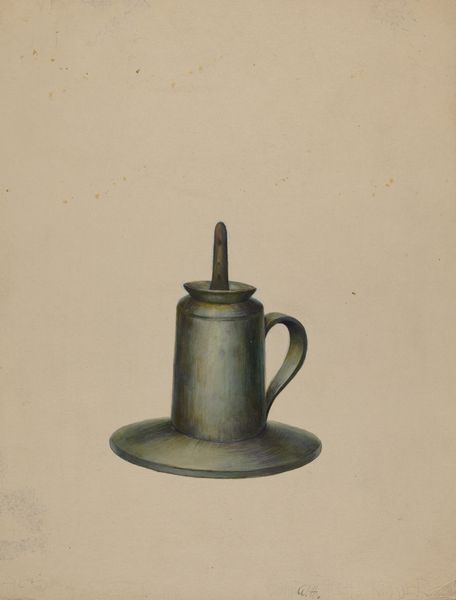
drawing, painting, watercolor
#
drawing
#
painting
#
watercolor
#
realism
Dimensions: overall: 27.9 x 22.8 cm (11 x 9 in.) Original IAD Object: 5" high; 3" wide
Copyright: National Gallery of Art: CC0 1.0
Curator: Ernest A. Towers Jr.'s, ca. 1942, watercolor entitled "Bull's Eye Hand Lantern" is really catching my eye today! Editor: It has a haunting, melancholic aura despite its simple subject matter; I wonder what sort of narratives the artist was attempting to capture? Curator: Looking purely at form, the painting strikes me with the expert deployment of realism, a conscious approach which offers an unbiased optical reading of the represented object. Editor: I wouldn't disagree with the realistic aspect, yet I'd suggest the painting provides more than merely the appearance of reality: it evokes a quiet resilience, a determination to see in the darkness as a country mobilizes for total war. Curator: I think you're seeing something that is, at the very least, outside of what the aesthetic framework tells me is within the four edges of the artwork. Are there additional elements that stand out for you as noteworthy? Editor: Well, the artist certainly understood form, creating depth and shadow via careful blending of hues; it's an admirable skill; nonetheless, for me, this watercolor captures a quiet fortitude representative of working-class experiences on the home front. I am curious how the function of this object intersects with propaganda efforts of that time? Curator: What really works is the juxtaposition of shapes—the conical reservoir contrasted by the angular lines that support the lens housing: The geometric arrangement suggests an architectural plan with a beautiful sense of precision. Editor: Your close reading encourages us to observe these subtleties while simultaneously expanding our knowledge and experience with intersectional analysis. Hopefully our listeners will take a deeper look, discovering this piece is more than the sum of its perfectly executed components, and maybe do more research on the artist. Curator: Perhaps. With art, it's essential that we don't overstep by imposing our own ideologies, allowing space for varied interpretations. The joy and enlightenment emerges from direct, personal observation. Editor: Indeed. Approaching the artwork through historical and cultural analysis provides deeper empathy while also making art more relevant to everyday experiences, ensuring it fosters dialogue within us and beyond.
Comments
No comments
Be the first to comment and join the conversation on the ultimate creative platform.
